Pastel de nata (or Portuguese egg tart) is a 19th-century small tart with a crispy puff pastry crust and a custardy pastry cream filling, presenting caramelized spots on top. This shortcut or easy dessert recipe cuts the prep time quite a bit yet tastes like the traditional treat. Watch our quick VIDEO!
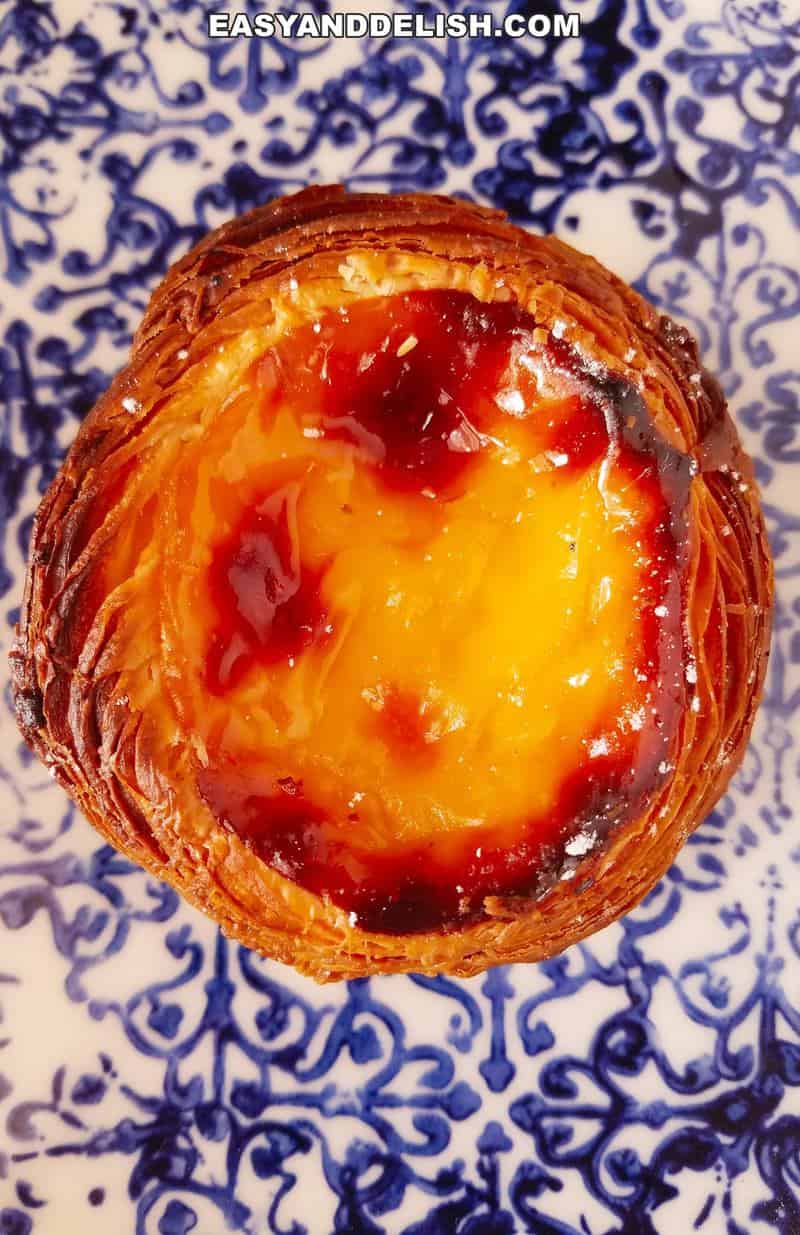
Table of Contents
How to Make Pastel de Nata
- To make these Portuguese tarts, prepare the custard. Whisk the whole eggs and egg yolks together in a medium bowl until homogeneous. Then, add sugar, milk, heavy cream, and vanilla extract, whisking the mixture until homogeneous. SEE PIC. 1
- Cover the bowl with a cling film or plastic wrap and chill in the fridge for at least one hour or until the sugar has dissolved.
- Meanwhile, preheat the oven at 480 degrees F (250 degrees C) and roll out the thawed puff pastry over a floured surface. Sprinkle just a little bit of flour over and spread. This will prevent the dough to stick on the surface and in your hands.
- Then, roll up the short side of the dough tightly into a log. Cut off the edges and slice the dough into 12 even pieces. SEE PIC. 2 It is key the dough is still chilled when you are molding it into the tart pans. If needed, wrap some pieces and chill until needed.
- Press each piece of dough into a greased small tart mold (3-inch or 7.5 cm diameter) until forming a crust that is thin and about ½-inch (1 cm) higher than the rim of the pan. When baking, the crust will shrink! If needed, wet your hands with water in order to mold the dough. Prick the bottom and sides with a fork to prevent puffing up too much and spill the filling. Alternatively, you can use a standard-size muffin tin instead of individual tart pans. But be aware the dough will shrink more and will be thinner on the edges.
- Cover the tart pans with foil and chill in the fridge for 10-15 minutes. Then, gently pour in the custard filling (70% full). SEE PIC. 3 Bake at the middle rack for 15-25 minutes or until the dough is cooked through and golden brown and the custard is set and has burnt (caramelized) spots on top.
- Let Portuguese egg tarts cool for 5 minutes, gently remove them from their tart tin, and place onto a rack to cool more. You can serve them warm or at room temp with a cup of coffee. If you prefer, sift powdered sugar and ground cinnamon on top. SEE PIC. 4
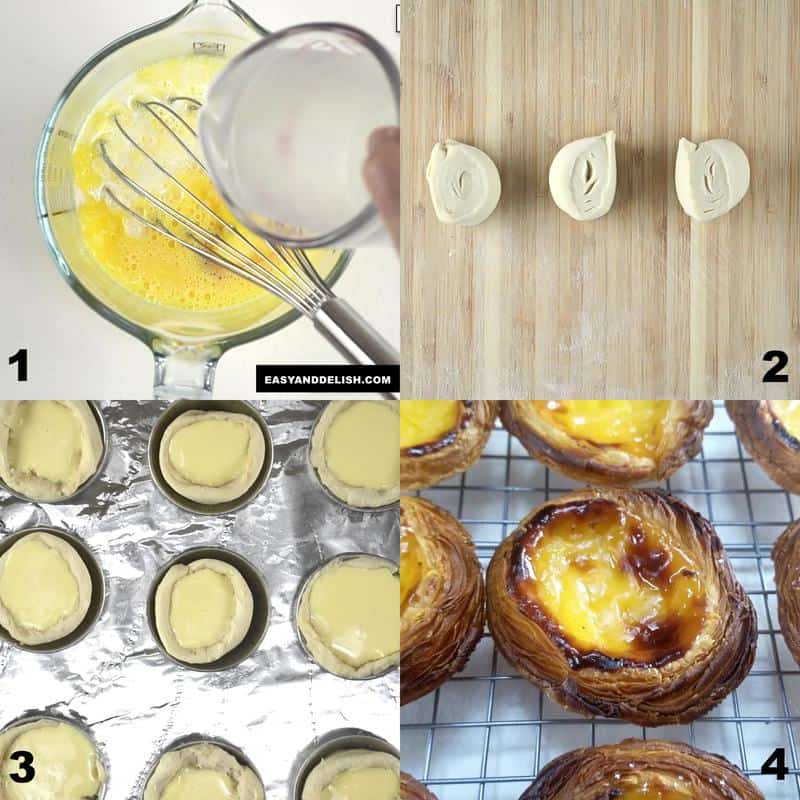
WATCH OUR QUICK VIDEO TO FIND OUT HOW TO MAKE PORTUGUESE EGG TART STEP-BY-STEP.
If you have never had pastel de nata, this is your big chance.
This isn’t any ordinary tart! We are sharing with you one of the Seven Wonders of Gastronomy. I ain’t no kidding!
The original Portuguese egg tart recipe from the 19th century is a real secret. Our recipe is the easy or shortcut version of that recipe.
To make the labor less intensive, we used a store-bought pastry dough which cuts the prep time quite a bit. Then we used a custard recipe that doesn’t need to cook on the stovetop like a regular pastry cream.
The result was excellent! The pastry crust is crispy and the custard is creamy and presents caramelized spots that are very characteristic of the original pastel de belém.
I first featured a different version of Manu’s Menu as part of a guest post a few years ago. There are several versions of the original and you are welcome to try any. They are simply delish!
Well, ready to prepare it together?
What’s Portuguese egg tart?
Known as Pastel de Belém or more often Pastel de Nata (plural pastéis de nata) in Portuguese, it is a small tart made from puff pastry and rich pastry cream with caramelized or burnt spots on top of the custard. I hope that this in itself is enough to make you smile!
Although created before the 19th century (the 1800s) by Catholic monks in Lisbon, Portugal, these pasteis de nata quickly became quite popular in several Portuguese-speaking countries such as Brazil, Goa, and Macau, under the name of Portuguese Egg Tarts or Pastel de Ovo.
Moreover, they became a hit in mainland China and countries with significant Portuguese immigration such as Canada, Australia, Luxembourg, the United States, England (where are called maids of honour), and France, among others.
But if you go to the Azores, please call them by their proper name there: Queijadas de nata!
The most popular egg tarts that everyone knows and loves are the Portuguese, Brazilian (similar to the Portuguese egg tarts), and the Chinese ones which don’t have a caramelized top.
In Portugal, the original recipe for Pastéis de Belém was made in 1837 by the Antiga Confeitaria de Belém, simply known under the name Pastéis de Belém following an ancient recipe from the Jerónimos Monastery.
That secret recipe is recreated every day by hand, using only traditional methods. It sells over 20,000 pastéis de nata a day! Portuguese enjoy sprinkling the top with ground cinnamon and powdered sugar and often accompany the tarts with a bica (a strong espresso coffee).
In my home country of Brazil, these Portuguese custard tarts have been a hit for a long, long time. I grew up enjoying them all year round, sometimes by themselves and sometimes accompanied by a cup of café au lait.
As a descendant of Portuguese ancestors, I imagine that it couldn’t have been any other way! But you know what? No matter where you go in Brazil, you will find the Portuguese pastel de nata in almost every café, bakery, or pastry shop – thank goodness!
Folks, Portuguese custard tarts are so good that they have been designated as one of the 7 wonders of Portuguese cuisine. And The Guardian, the well-known British national newspaper, pronounced them as the 15th tastiest delicacy in the world. Need I say more?
I have a simpler approach! To me, they look like little rays of sunshine, and taste like heaven! I hope that they will for you as well…
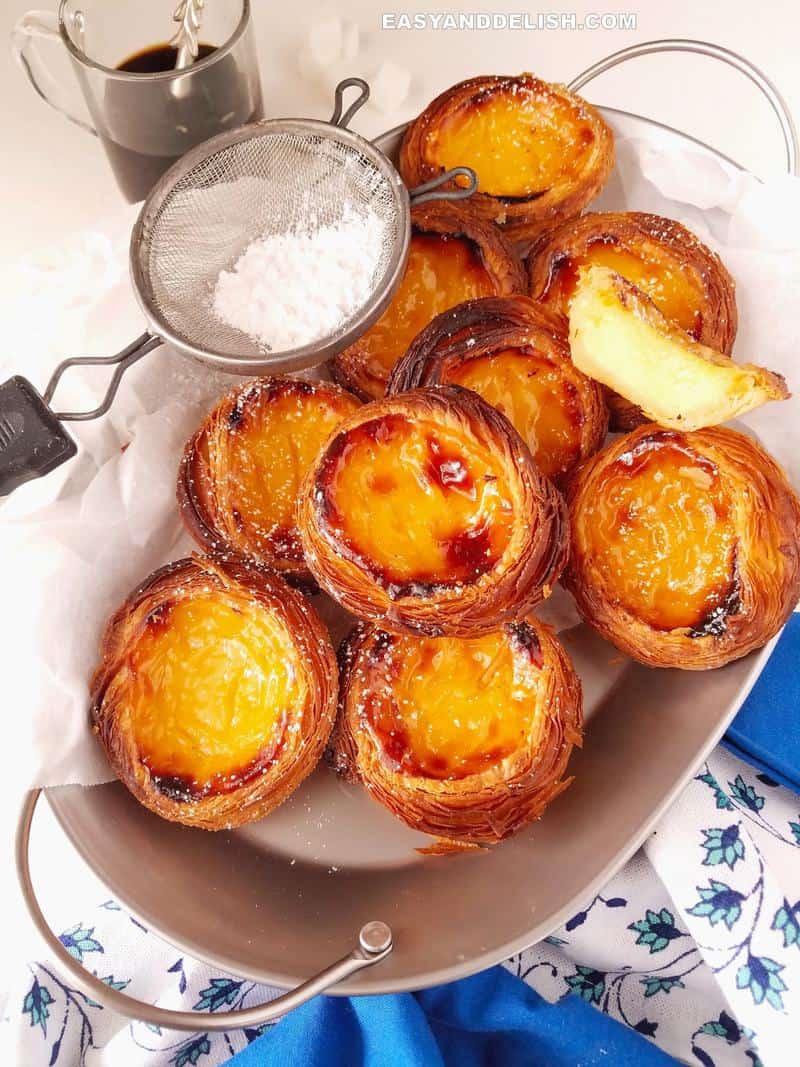
Ingredients and Substitutions
- Puff pastry – we bought ours ready at the freezer of our local grocery store but you’re welcome to make yours from scratch.
- Eggs – we used both whole eggs and egg yolks. The egg whites provide structure to the non-cooked custard while the egg yolks give richness and that yellow color.
- Sugar – some use powdered sugar but we used white granulated sugar which will fully melt and caramelize the tart while it bakes in the oven. You can adjust the amount to your taste. But the traditional Portuguese egg tart is not too sweet!
- Dairy – we used a combination of whole milk and heavy whipping cream to give the egg tarts that creamy consistency.
- Vanilla extract is the flavoring ingredient. If you have it at home, use vanilla beans for a tastier custardy filling. Some use lemon zest or lemon peel!
Expert’s Tips for Making the Perfect Portuguese Custard Tarts
- Puff pastry: Make your own at home at least one day ahead or buy one ready as I did. Make sure to read the ingredients of a store-bought puff pastry. It should contain butter (no oil) and flour, of course. Thaw it before rolling out and always work with chilled dough. Wrap some pieces and chill them in the fridge while working on the other pieces.
- Make sure the dough is thin when you finish molding into the tart pans and higher than the tart rim (about ½ inch or 1 cm). It will shrink when baking!
- Prick the bottom and sides with a fork so the dough won’t puff up too much and spill the filling.
- There are several ways to make the filling. Some add flour or cornstarch as a thickener agent, cinnamon stick to flavor, and then cook the filling on the stovetop. Our Portuguese custard tart recipe doesn’t require that. It has no flour or cornstarch. It makes for a quicker yet lighter filling. But It is the key to letting our custard rest in the fridge so the sugar can dissolve. Some recipes also call for a sugar syrup which sometimes is poured over or into the stovetop custard. But not ours!
- Serve the pastel de nata sprinkled on top with ground cinnamon and powdered sugar if you want. This is the way the Portuguese eat theirs!
- The tart is ready when the dough is fully cooked and the filling is set and presents burnt spots on top – so characteristic in these tarts!
- Use 12 standard-size muffin cups if you don’t have small tart pans. But be aware the dough will shrink more and the edges of the crust will be thinner.
- Always grease each tart mold or pastry shell; otherwise, the tarts will be hard to remove from the molds without breaking apart after baking and cooking down.
- Do not fill the crust more than 70% with the creamy custard; otherwise, the risk of spillage is higher.
- Most Portuguese desserts are heavy in egg yolks just like this tart, fio de ovos, and the Brazilian quindim (heavy in egg yolks following the tradition of their settlers).
- Pastéis de nata and Hong Kong egg tart recipes call for a puff pastry flaky crust and a creamy filling.
FAQs
The major difference is that Portuguese egg tart has a burnt top because it is baked at high temperatures (around 480° to 550° F or 250° to 290° C). Also, the filling is usually heavier, creamier, or more consistent than the Hong Kong egg tart because it uses heavy cream, cornstarch, or flour, and more egg yolks, are often cooked on the stovetop before baking. On the other hand, the Chinese egg tart (Dim Sum) looks more like a regular custard tart with a (bright yellow filling) because it is baked at a medium temperature (350° F or 180° C), and its filling calls for whole eggs and evaporated milk and usually is not cooked before baking.
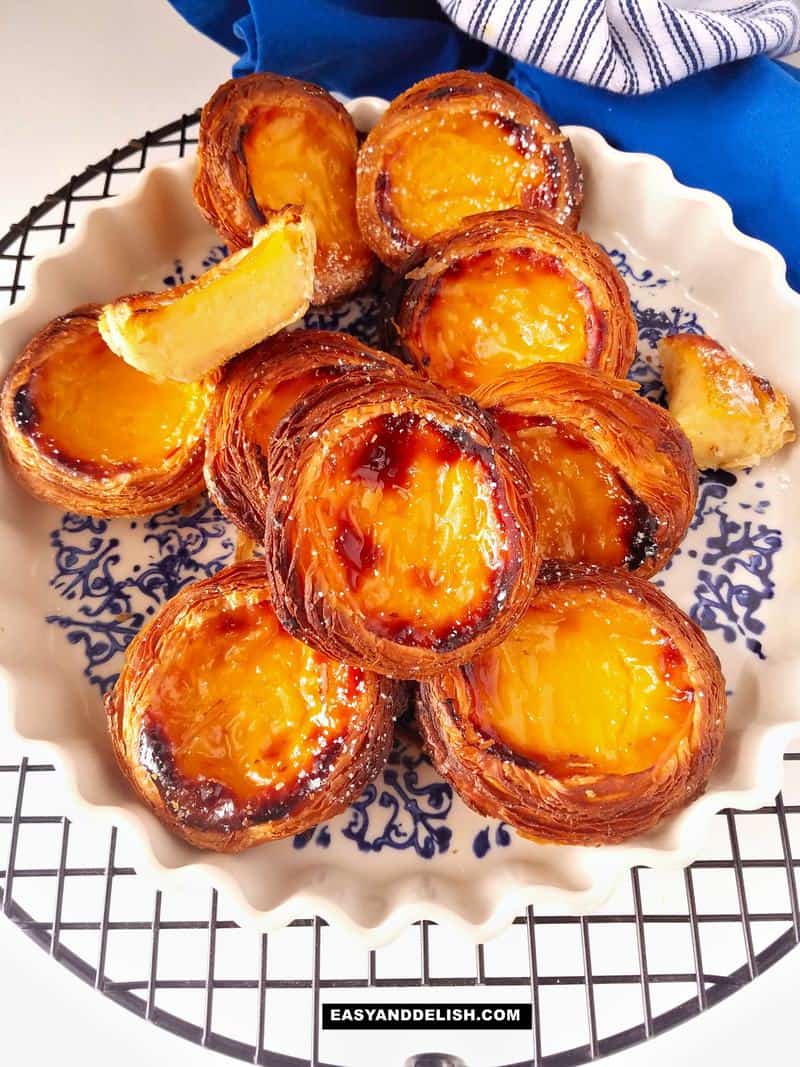
How to Store Pastéis de Nata
- If consumed within the day you make them, you do not need to refrigerate them. You can eat them warm or at room temperature. However, if you have leftovers, chill them in the fridge in an airtight container for up to 2 days. You can eat them chilled (my favorite way).
- Or, you can reheat them in a preheated oven (at 350° F or 180° C) for about 8 minutes.
- To freeze them, put the Portuguese egg tarts into a baking sheet and freeze for about 2 hours. Then, place them into a freezer bag in one single layer and freeze for up to 2 months. Thaw in the fridge! Be aware their crust won’t be as crispy and the filling will be less creamy and may curd a little.
What to serve with Portuguese Tarts?
In Portugal, they serve these egg custard tarts sprinkled with powdered sugar and ground cinnamon on top plus a cup of espresso (bica).
In Brazil, we eat them by themselves as a dessert or an afternoon sweet treat with a small cup of coffee (cafezinho).
Other tart recipes
PIN & ENJOY!
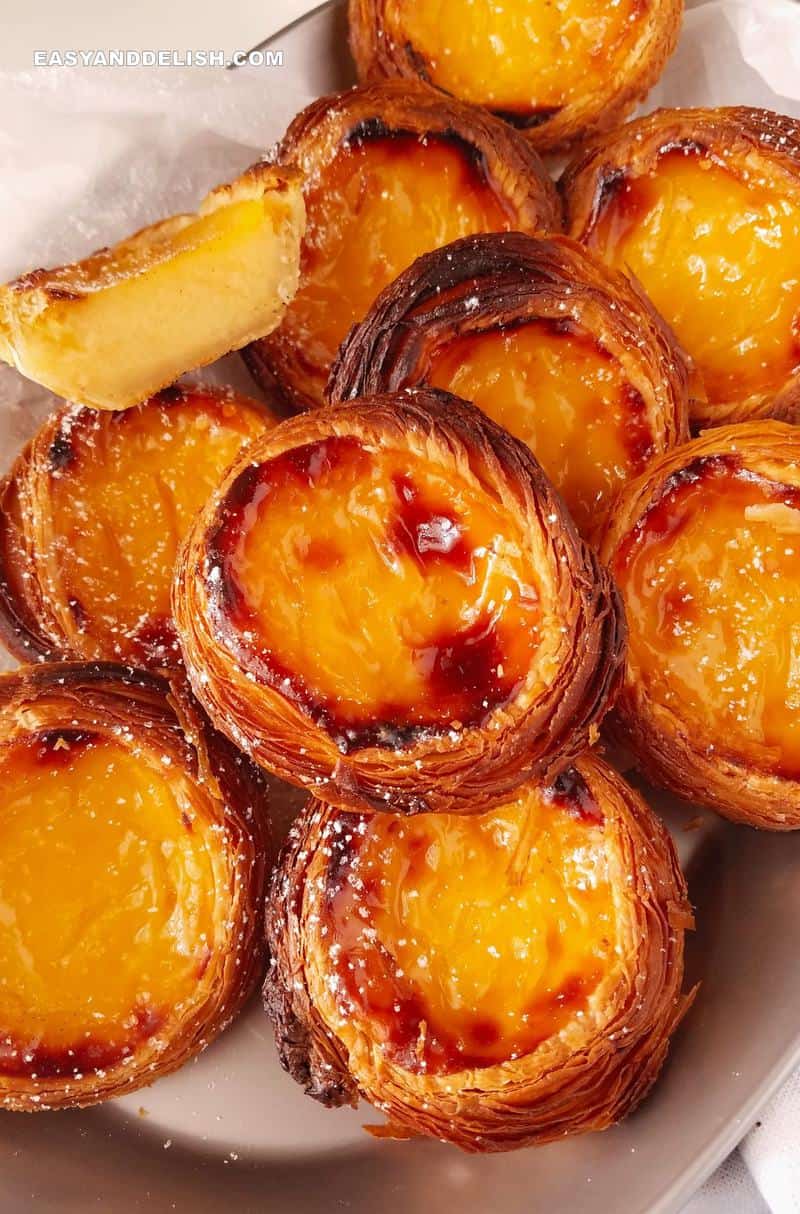
FOLLOW US on INSTAGRAM, PINTEREST, and FACEBOOK for more easy and delish recipes and updates.
Pastel de Nata (Portuguese Egg Tart)
Equipment
- oven
- tart tins
- bowl
Ingredients
- 2 large whole eggs
- 3 egg yolks
- ½ cup white granulated sugar
- 1 teaspoon pure vanilla extract
- ⅓ cup whole milk about 75 ml
- ⅔ cup heavy whipping cream 150 ml
- 2 14 oz packages puff pastry 14 oz each (Please see NOTE)
Instructions
- To make these Portuguese tarts, prepare the custard. Whisk the whole eggs and egg yolks together in a medium bowl until homogeneous. Then, add sugar, milk, heavy cream, and vanilla extract, whisking the mixture until homogeneous.

- Cover the bowl with a cling film or plastic wrap and chill in the fridge for at least one hour or until the sugar has dissolved.
- Meanwhile, preheat the oven at 480 degrees F (250 degrees C) and roll out the thawed puff pastry over a floured surface. Sprinkle just a little bit of flour over and spread. This will prevent the dough to stick on the surface and in your hands.
- Then, roll up the short side of the dough tightly into a log. Cut off the edges and slice the dough into 12 even pieces. It is key the dough is still chilled when you are molding it into the tart pans. If needed, wrap some pieces and chill until needed.

- Press each piece of dough into a greased small tart mold (3-inch or 7.5 cm diameter) until forming a crust that is thin and about ½-inch (1 cm) higher than the rim of the pan. When baking, the crust will shrink! If needed, wet your hands with water in order to mold the dough. Prick the bottom and sides with a fork to prevent puff up too much and spill the filling. Alternatively, you can use a standard-size muffin tin instead of individual tart pans. But be aware the dough will shrink more and will be thinner on the edges.
- Cover the tart pans with foil and chill in the fridge for 10-15 minutes. Then, gently pour in the custard filling (70% full) and bake at the middle rack for 15-25 minutes or until the dough is cooked through and golden brown and the custard is set and have burnt (caramelized) spots on top.

- Let Portuguese egg tarts cool for 5 minutes, gently remove them from their tart tin, and place on a rack to cool more. You can serve them warm or at room temp with a cup of coffee. If you prefer, sift powdered sugar and ground cinnamon on top.

Recipe Video

Recipe Notes
Nutrition
** Nutrition labels on easyanddelish.com are for educational purposes only. This info is provided as a courtesy and is only an estimate, since the nutrition content of recipes can vary based on ingredient brand or source, portion sizes, recipe changes/variations, and other factors. We suggest making your own calculations using your preferred calculator, based on which ingredients you use, or consulting with a registered dietitian to determine nutritional values more precisely.
Please note that health-focused and diet information provided on easyanddelish.com is for educational purposes and does not constitute medical advice, nor is it intended to diagnose, treat, cure, or prevent disease. Consult with your doctor or other qualified health professional prior to initiating any significant change in your diet or exercise regimen, or for any other issue necessitating medical advice.
The post was first published on April 6th, 2015.



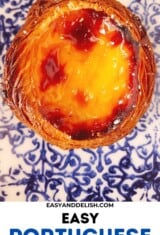
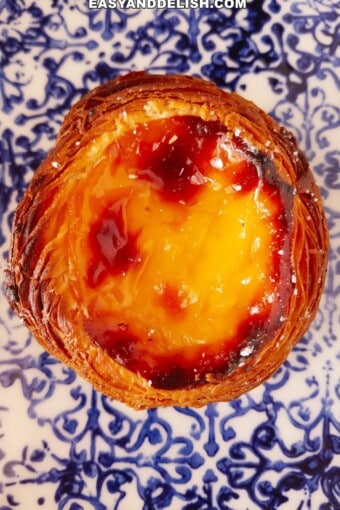
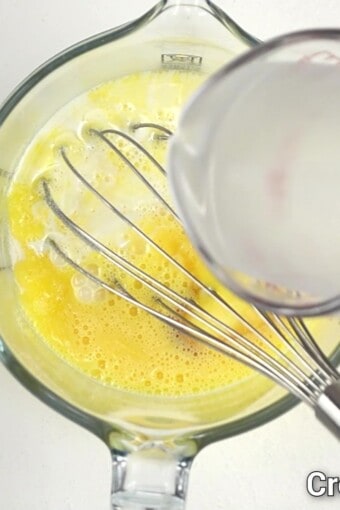
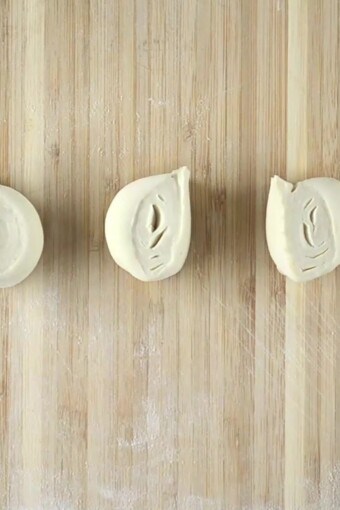
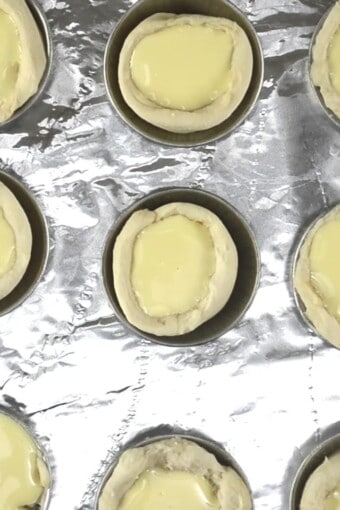
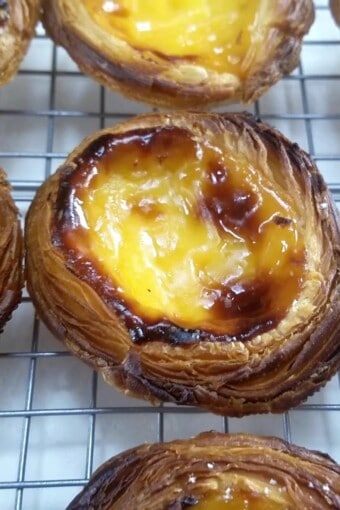
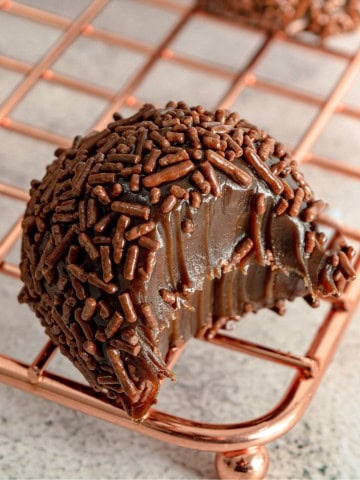
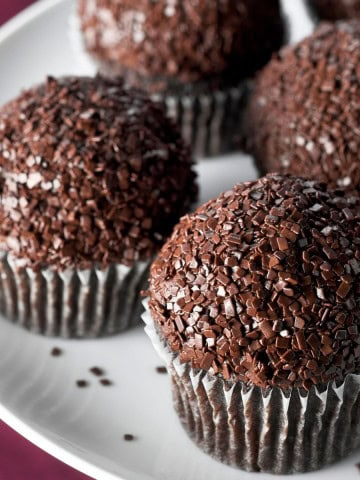


Katherine saunders says
Recipe calls for 2 …..14 oz pkgs of puff pastry. However it says to cut into 12 pcs. When do you use the other pkg? I made 6 out of each pkg. hoping pastry is not too thick. 12 pcs out of one pkg would have seemed way too thin !
Denise Browning says
Thank you, Katherine, for calling this out! I forgot to add a note sayng if you use tart molds like I did, you'll only need one box of puff pastry, yielding 12 tarts. However, if you use a 12-cup stardard-size muffin tin, you'll need 2 boxes fo puff pastry, each cut into 6 pieces. Because the muffin tin has cups with higher edges than the tart molds, you will need a larger piece of dough to stretch it into each cup of the tin, avoiding too much shrinkage and spilling of the filling.
Fani says
Love your recipe. Try it and it taste sooo good. And it sooo easy too. Thank you for the recipe
Denise Browning says
My pleasure. So happy you enjoyed our pastel de natas!